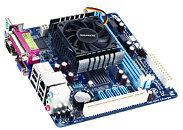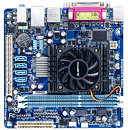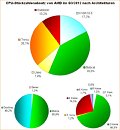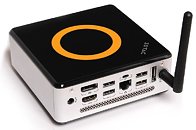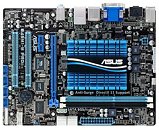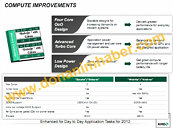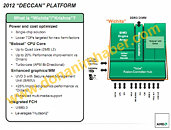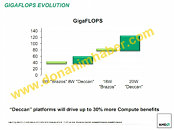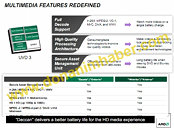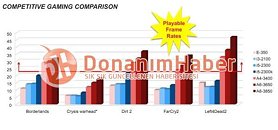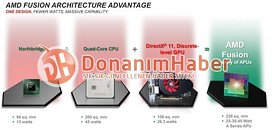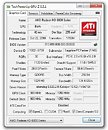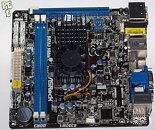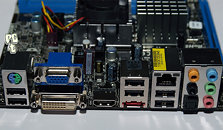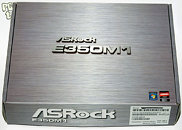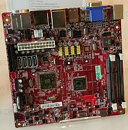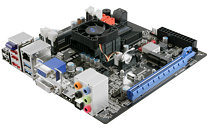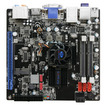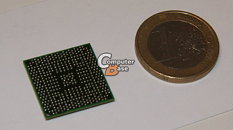
Gigabyte Intros E350N WIN8 Mini-ITX Motherboard
Gigabyte rolled out a new mini-ITX motherboard based on the AMD E350 "Zacate" APU, for entry-level PC and home-server builds, the E350N-WIN8. As the name might suggest, the board is designed to run Windows 8 with its entire feature set, including Fast Boot. It does that by replacing legacy AwardBIOS on older variants, with modern AMI UEFI, backed by Gigabyte's Dual-UEFI redundant BIOS technology that protects against failed BIOS updates. The E350N WIN8 uses a fairly big (SFF-safe) fan-heatsink to cool the APU, while a tiny heatsink cools its companion A45 FCH chipset.
The AMD E350 packs two x86-64 cores clocked at 1.60 GHz, with a maximum memory support of 16 GB, and AMD Radeon HD 6310D DirectX 11 graphics that rides on 80 stream processors. The APU is wired to two standard-size 240-pin DIMM slots. The lone expansion slot, sadly, is a legacy PCI. The board draws power from a combination of 24-pin and 4-pin ATX connectors. Connectivity includes four SATA 3 Gb/s ports, eight USB 2.0/1.1 ports (four on the rear panel, four by headers), serial RS232 (COM) and parallel (LPT) ports, PS/2 mouse and keyboard connectors, and display outputs that include D-Sub (VGA) and HDMI (with 7.1-channel digital HD audio). Expect a sub-$100 price point.
The AMD E350 packs two x86-64 cores clocked at 1.60 GHz, with a maximum memory support of 16 GB, and AMD Radeon HD 6310D DirectX 11 graphics that rides on 80 stream processors. The APU is wired to two standard-size 240-pin DIMM slots. The lone expansion slot, sadly, is a legacy PCI. The board draws power from a combination of 24-pin and 4-pin ATX connectors. Connectivity includes four SATA 3 Gb/s ports, eight USB 2.0/1.1 ports (four on the rear panel, four by headers), serial RS232 (COM) and parallel (LPT) ports, PS/2 mouse and keyboard connectors, and display outputs that include D-Sub (VGA) and HDMI (with 7.1-channel digital HD audio). Expect a sub-$100 price point.
